- Show in colleagues overview: No
- Show in colleagues overview: No
- Show in colleagues overview: Yes
Tom Verhelst, Lead Design Engineer
Tom in a nutshell
- Started at FPC Risk in 2001.
- Has a degree in Electromechanics.
- Enjoys the international assignments and the variety in his portfolio.
- Will forever remember the great team building activities in Berlin, Knokke, or Cyprus.
- Would have been a real estate agent in a different life.
What is your job position at FPC Risk and how did you get there?
FPC Risk is my first employer. After my Electromechanics studies, the company attracted me with its promise of variation in projects and international locations.
What does your job entail?
I started as a designer and evolved to lead designer. I now manage and direct a team of installation designers. I manage projects and sales, try to bring in new clients, and draw up price quotations. As a lead designer, I get to oversee projects from A to Z, which is very gratifying.
Can you describe a typical workday?
Almost every day starts with a design team plan meeting, after which I visit clients to review new or ongoing projects. I regularly go on-site to test sprinkler systems and to investigate whether installations are still up-to-code.
I’m also permanently available to support my team, write quotations, respond to ad-hoc problems, and as the single point of contact for my clients.
What is your favorite aspect of working for FPC Risk?
What I still love most, after all my years at FPC Risk, is the variation in sectors we work for. I get to see industries up close, from hotels to chemical plants, from shopping malls to airports. Everything is twice as big as what you get to see as an ‘ordinary person’. Especially off-shore platforms make for a peculiar experience.
I’ve also been to Kuwait, Dubai, Cyprus, Qatar, Bahrein, ... I even shared a conference table with the Nigerian Port Secretary, who was treated like royalty there, complete with bowing and a string of soldiers.
Closer to home, there‘s our group of exceptional colleagues, each with their own expertise. Because our know-how fits perfectly together, it’s easy for us to manage projects from start to finish.
And one more small thing: I enjoy coming home with fun stories about hydrants shooting around water during tests.
- Show in colleagues overview: No
- Show in colleagues overview: Yes
Computational Fluid Dynamics (CFD): powerful simulation technology that promotes fire safety
Computational Fluid Dynamics, or CFD for short, is used to predict the spread of smoke and heat from fires. In this way, CFD simulations contribute to the fire safety of buildings. But beware, CFD is a job for specialists like Laura Holtslag, Fire Risk Engineer at FCP Risk. We spoke with her about the benefits and challenges of CFD in fire safety.
